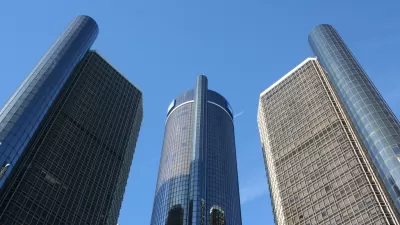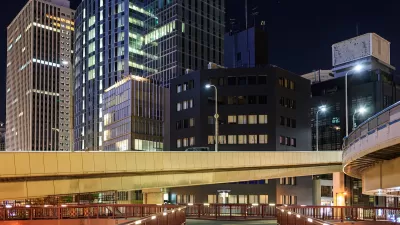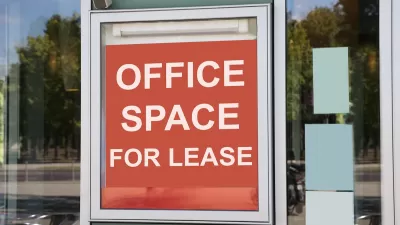Adaptive reuse is a hot concept, but regulatory and financial hurdles have made it slow to catch on in practice.

With many companies offering their employees long-term remote work and ending their leases on large urban office buildings, the future of business districts may lie in adaptive reuse, writes Henry Grabar in Slate. "Many business districts face the highest vacancy rates in decades, and a hundred million square feet of new supply from the pre-pandemic cycle is still coming online each quarter."
"There’s ample precedent for adaptive reuse as an engine of urban revitalization. Light industrial buildings in New York City’s Cast Iron Historic District (today’s SoHo) were converted into live-work lofts starting in the 1960s. The rich stock of 20th century office buildings in Chicago and Los Angeles have been converted into apartments. New England mills have been appropriated as hotels and museums."
Adaptive reuse is "one of the greenest constructions you can do," says Scott Maenpaa, a project manager at Boston-based the Architectural Team, and can be 20 to 30 percent cheaper than new construction, but conversions across the country have been relatively slow. Long-term leases, in many cases ten years or more, are creating a lag in office building vacancy, and a complicated legal landscape makes the process difficult and expensive. So far, "office owners by and large aren’t yet trying to unload their buildings at conversion-friendly prices."
"'The current controls in place make it really difficult to be able to convert from office or hotel to residential,' said Sheila Pozon, a land use lawyer at Kramer Levin." Cities like Dallas and Baltimore "did not see significant conversion of older offices until they offered sizable tax breaks," indicating that, while adaptive reuse seems "a bigger trend will require a push."
FULL STORY: Could Your Empty Office Turn Into Apartments?

Maui's Vacation Rental Debate Turns Ugly
Verbal attacks, misinformation campaigns and fistfights plague a high-stakes debate to convert thousands of vacation rentals into long-term housing.

Planetizen Federal Action Tracker
A weekly monitor of how Trump’s orders and actions are impacting planners and planning in America.

In Urban Planning, AI Prompting Could be the New Design Thinking
Creativity has long been key to great urban design. What if we see AI as our new creative partner?

Pedestrian Deaths Drop, Remain Twice as High as in 2009
Fatalities declined by 4 percent in 2024, but the U.S. is still nowhere close to ‘Vision Zero.’

King County Supportive Housing Program Offers Hope for Unhoused Residents
The county is taking a ‘Housing First’ approach that prioritizes getting people into housing, then offering wraparound supportive services.

Researchers Use AI to Get Clearer Picture of US Housing
Analysts are using artificial intelligence to supercharge their research by allowing them to comb through data faster. Though these AI tools can be error prone, they save time and housing researchers are optimistic about the future.
Urban Design for Planners 1: Software Tools
This six-course series explores essential urban design concepts using open source software and equips planners with the tools they need to participate fully in the urban design process.
Planning for Universal Design
Learn the tools for implementing Universal Design in planning regulations.
planning NEXT
Appalachian Highlands Housing Partners
Mpact (founded as Rail~Volution)
City of Camden Redevelopment Agency
City of Astoria
City of Portland
City of Laramie





























